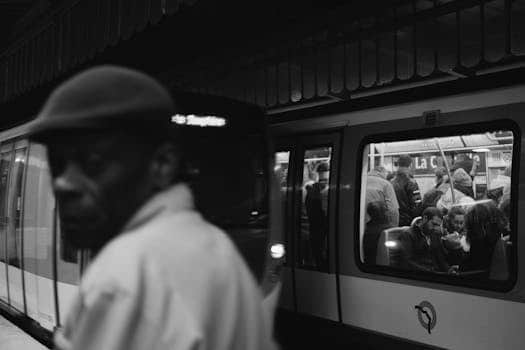Underground Mobility: The Revival of Subway Systems
The increasing urbanization has brought new challenges for city planners and local authorities, especially concerning transportation. Congested roads and crowded buses are becoming a norm in major cities around the world. This has led to a revival of underground mobility, with existing subway systems being upgraded and new ones being built in many cities. The resurgence in the popularity of subways is a result of their many advantages over other forms of transportation. In this article, we will explore the reasons behind the revival of subway systems and their impact on urban living.
The Many Advantages of Subways
Subway systems offer a faster and more efficient mode of transportation compared to other forms, such as buses and cars. The lack of road traffic means that subways are not subject to delays, making them a reliable mode of transportation. This is especially beneficial for commuters who need to get to their destination on time, whether it be for work or other commitments. Additionally, subways operate on a fixed schedule, making it easier for commuters to plan their journeys.
Another major advantage of subways is their capacity to transport a large number of people. With increasing populations, cities are facing the challenge of overcrowded roads and public transport systems. Subways can carry a significantly higher number of passengers compared to buses or cars, reducing the strain on other modes of transportation.
In terms of environmental sustainability, subways are a much better option compared to cars and buses. They run on electricity, which produces fewer emissions and contributes to reducing air pollution. This is not only beneficial for the environment but also for the health of city dwellers.
Reviving Old Subways
In many cities, old subway systems are being upgraded and modernized to cater to the increasing demand for underground mobility. This not only extends the life of existing infrastructure but also provides a faster and more comfortable experience for commuters. Upgrades range from technological advancements such as automatic train control systems to aesthetic improvements such as modernizing station designs.
Moreover, the revival of old subway systems has proved to be a cost-effective solution for cities, as opposed to building new ones from scratch. The upgrades and improvements not only attract more commuters but also reduce the maintenance costs of the aging infrastructure. This also translates to cost savings for commuters, making subways a more attractive transportation option.
Building New Subways
In addition to upgrading existing systems, many cities are also investing in building new subway lines. This is especially true for rapidly growing cities that are facing transportation challenges. Building new subways allows cities to expand their network and connect previously isolated areas, providing better accessibility to citizens.
As opposed to building more roads and expanding bus fleets, subways offer a more sustainable solution that can cater to the growing population. The initial costs may be higher, but in the long run, building new subways proves to be a better investment for cities.
The Impact on Urban Living
The revival of subway systems has a significant impact on urban living. With faster and more reliable transportation options, people can commute from the outskirts of the city to the center in a shorter time, expanding the job opportunities and housing options for residents. This also reduces the need for individuals to own a car, leading to fewer cars on the road and less traffic congestion. It also promotes a healthier lifestyle by encouraging people to walk more, as they can easily access subways from their residences.
Moreover, the development of subways leads to the development of the areas surrounding the stations, boosting the local economy and providing new social and commercial spaces for residents. This revitalization of neighborhoods improves the overall quality of urban living.
In Conclusion
The revival of subway systems is a positive trend that is gaining momentum in many cities around the world. By offering a faster, more efficient, and sustainable mode of transportation, subways are becoming crucial in addressing the challenges faced by urban areas. The upgrades and new developments are not only benefiting commuters but also improving the overall quality of urban living. The future of underground mobility looks promising and will continue to play a vital role in shaping the urban landscape.









